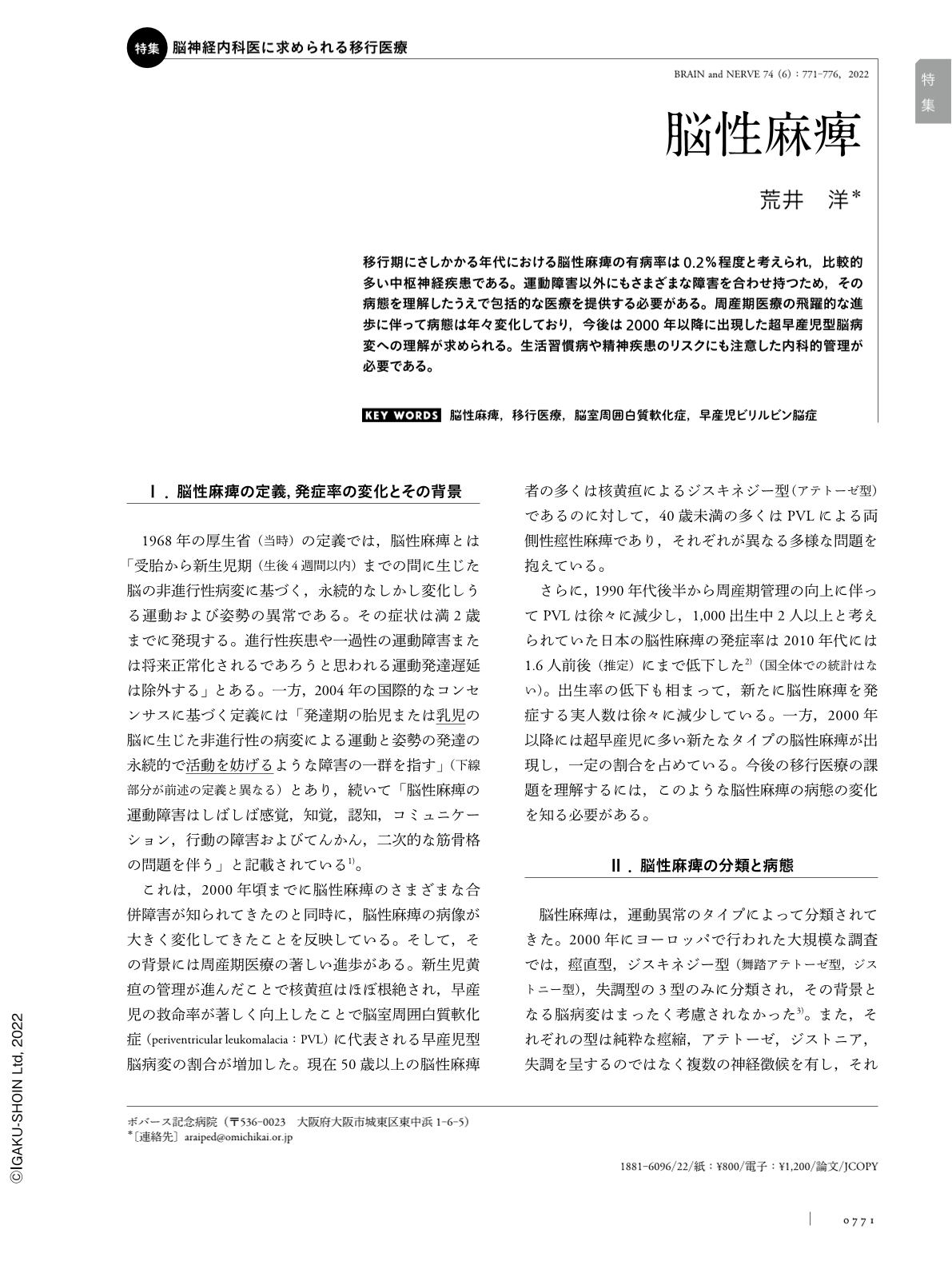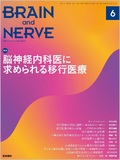Japanese
English
- 有料閲覧
- Abstract 文献概要
- 1ページ目 Look Inside
- 参考文献 Reference
- サイト内被引用 Cited by
移行期にさしかかる年代における脳性麻痺の有病率は0.2%程度と考えられ,比較的多い中枢神経疾患である。運動障害以外にもさまざまな障害を合わせ持つため,その病態を理解したうえで包括的な医療を提供する必要がある。周産期医療の飛躍的な進歩に伴って病態は年々変化しており,今後は2000年以降に出現した超早産児型脳病変への理解が求められる。生活習慣病や精神疾患のリスクにも注意した内科的管理が必要である。
Abstract
Cerebral palsy (CP) is a relatively common neurological disease, and its prevalence at a transitional age is estimated to be approximately 0.2% in Japan. We should understand the pathology of CP, which causes various dysfunctions other than motor disturbances, for delivering a comprehensive treatment. Rapid progress in perinatal medicine has altered the underlying brain lesions. Bilateral spastic CP associated with visual cognitive impairment due to periventricular leukomalacia has becomethe most prevalent instead of dyskinetic CP due to kernicterus. New types of brain lesions found in very premature infants will be more common among adult CP in the future. Cerebellar injury causes disturbances in cognition and communication, and bilirubin encephalopathy causes severe motor impairment with marked dystonia. The latter needs various medical treatments, including botulinum toxin and intrathecal baclofen. Elevated risk of lifestyle-related and psychological diseases should also be considered.

Copyright © 2022, Igaku-Shoin Ltd. All rights reserved.


